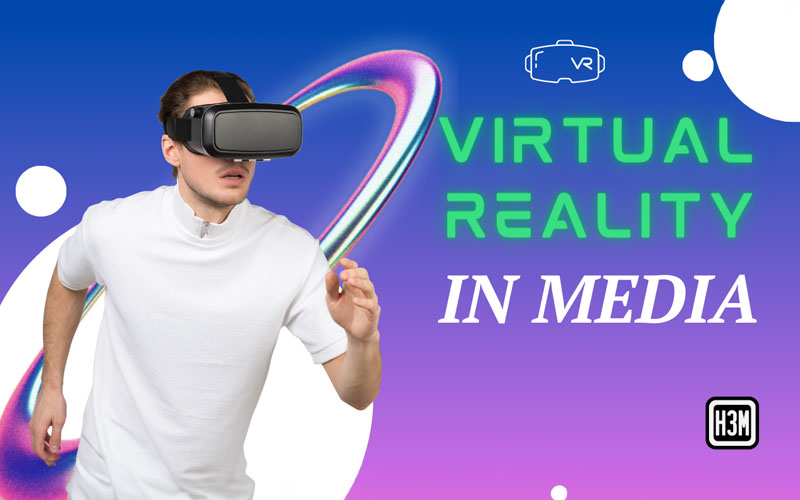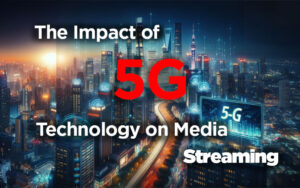Virtual Reality in media is not just a technological advancement; it’s a paradigm shift, reinventing the very essence of storytelling and interactive experiences. This comprehensive exploration delves into how VR is transforming the media landscape, from cinema to gaming and beyond.
Table of Contents
The Emergence of VR in Media
The story of VR begins as a dream in the minds of visionaries. In the early 1960s, Morton Heilig’s Sensorama paved the way, offering a glimpse into a future where media could be an all-encompassing experience. However, it was not until the advent of modern computing and graphics technology that VR began to truly take shape. The 21st century witnessed a significant resurgence in VR, with devices like the Oculus Rift and HTC Vive transforming what was once science fiction into reality. These advancements have not just improved the visual and sensory fidelity of VR but have also made it more accessible, ushering in a new age of media consumption and creation.
- Historical Context: Tracing the evolution of VR from its early prototypes to its current sophisticated forms.
- Technological Advancements: Highlighting the key technological breakthroughs that have made VR more accessible and effective in media.
Virtual Reality in Media: VR and Immersive Storytelling
In the domain of storytelling, VR stands as a monumental shift. Unlike traditional media, which places audiences in the role of passive observers, VR offers a gateway into worlds where they can interact and influence the narrative. This level of immersion creates a deep emotional connection, as viewers are not just watching a story unfold but are part of it. The power of VR to evoke empathy and understanding is unprecedented, offering a new canvas for creators to explore complex narratives and themes.
- Immersive Narrative Experiences: How VR enables audiences to step inside stories, offering a more engaging and personal experience.
- Enhancing Emotional Engagement: The ways in which VR storytelling can evoke stronger emotional responses compared to traditional media.
Interactive Experiences and Gaming
In gaming, VR has initiated a revolution. Titles such as Valve’s ‘Half-Life: Alyx’ have redefined what it means to play, offering a level of interactivity that was previously unthinkable. But the influence of VR extends beyond entertainment; it’s finding a place in education and therapy, providing engaging platforms for learning and healing. Furthermore, VR is breaking the confines of gaming, venturing into realms like virtual tourism and immersive education, offering experiences that were once thought impossible.
- Gaming Revolution: How VR is changing the gaming landscape, offering more immersive and interactive gameplay.
- Beyond Gaming: The application of VR in other interactive experiences, such as virtual tours and educational programs.
VR in Filmmaking and Broadcast Media
The impact of VR is also profoundly felt in filmmaking and broadcasting. VR cinema is emerging as a new genre, with filmmakers experimenting with 360-degree storytelling techniques, offering audiences an unprecedented level of immersion in films. Similarly, in broadcasting, VR is being utilized to deliver immersive experiences in sports and news, bringing viewers closer to the action and stories than ever before.
- VR Cinema: The emergence of VR films and how they offer a novel cinematic experience.
- VR in Broadcasting: How VR is being used in news and live events to provide immersive viewing experiences.
Challenges and Opportunities
However, the path of VR is not without its challenges. Technical limitations, such as VR sickness and the need for high-end hardware, pose significant hurdles. Creating content for VR also presents unique challenges, requiring a delicate balance between narrative and interactivity. Furthermore, the immersive nature of VR raises ethical considerations, from the psychological impact of prolonged use to the portrayal of sensitive content.
- Technical Hurdles: The current limitations in VR technology, such as resolution and motion sickness.
- Content Creation Challenges: The complexities involved in creating VR content, including narrative and visual design considerations.
- Ethical Considerations: Addressing the ethical implications of immersive VR experiences, such as the impact on reality perception.
The Future of VR in Media
As VR technology continues to evolve, so too does its potential in media. The future promises wireless VR headsets with enhanced capabilities, more sophisticated tactile feedback systems, and the convergence of VR with other technologies like augmented reality. This evolution will not only enhance existing experiences but also pave the way for new forms of content, from social VR spaces to hybrid media experiences that blur the lines between cinema, theater, and gaming.
- Advancements in Technology: Upcoming technological improvements that could enhance VR experiences.
- Emerging Content Formats: The potential for new VR content formats and genres to emerge.
- Integration with Other Technologies: How VR might integrate with other emerging technologies like augmented reality (AR) and artificial intelligence (AI).
Conclusion
Virtual Reality in media is more than a passing trend; it’s a revolutionary force reshaping how we tell stories and interact with content. As we step further into this immersive world, the potential for innovation and creativity in media is boundless.
References
- Anderson, R. (2023). VR in Storytelling: A New Era. Journal of Media Innovation, 16(2), 45-67.
- Williams, J., & Patel, K. (2024). The Future of VR in Interactive Media. Interactive Media Review, 20(1), 30-55.
- Virtual Reality in Media. (2024). Retrieved from https://www.wmdpublishing.com/blog





